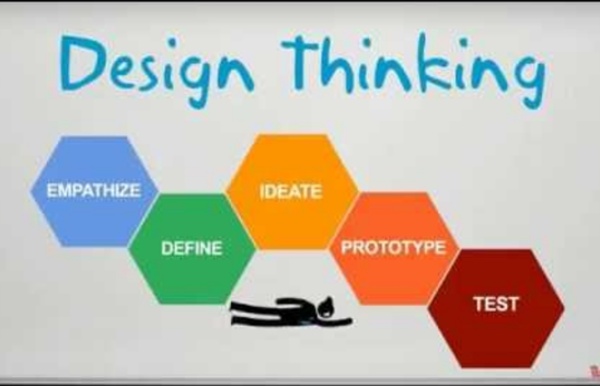



http://www.youtube.com/watch?v=a7sEoEvT8l8
Related: Creativity & Service Design • Design ThinkingDesign Thinking Comes of Age Executive Summary In large organizations, design is moving closer to the center of the enterprise. This shift isn’t about aesthetics and product development, however. It’s about imparting the principles of design—collectively known as design thinking—throughout the organization. The approach is in large part a response to the complexity of many products, services, and processes. An Introduction to Design Thinking (Part Two) In the constructivist-learning model, engagement and experience combine with immersive environments and self-organisation of knowledge to establish a context in which learning occurs naturally. Constructivism has since the time of Dewey become closely affiliated with Project Based Learning and yet despite years of efforts to refine the process the result does not always match the promise (Scheer, Noweski and Meinel. 2012). Scheer et al. argue that ‘Design Thinking’ is capable of providing the structure required for successful constructivist learning and the development of skills required for 21st century citizenship. ‘We want to fill that gap by proposing ‘Design Thinking’ as a meta-disciplinary methodology which offers teachers the needed support through a formalised process. Teachers, as facilitators of learning need to be equipped with up-to-date skills and tools to actually practice on the needed key competence learning.’ Promoting a Growth Mindset
How to Apply Design Thinking in Class, Step By Step By Anne Stevens For educators ready to try the idea of design thinking, you’ll be glad to know it does not require extensive transformation of your classroom. That said, it can be a transformative experience for all involved. Here, we try to answer your questions about integrating different components of a design learning experience into familiar, pre-existing scenarios that play out in every school. Can my classroom become a space of possibility? For students, the best classroom experience is a space of possibility. IBM’s Design-Centered Strategy to Set Free the Squares Photo Phil Gilbert is a tall man with a shaved head and wire-rimmed glasses. He typically wears cowboy boots and bluejeans to work — hardly unusual these days, except he’s an executive at , a company that still has a button-down suit-and-tie reputation. And in case you don’t get the message from his wardrobe, there’s a huge black-and-white photograph hanging in his office of a young Bob Dylan, hunched over sheet music, making changes to songs in the “Highway 61 Revisited” album. It’s an image, Mr. Gilbert will tell you, that conveys both a rebel spirit and hard work.
Why Human-Centered Design Matters In 1894, W.K. Kellogg made a discovery that would forever change what we eat in the morning. Seeking a more digestible breakfast alternative to baked bread for his brother’s hospital patients, the bespectacled former broom salesman accidentally left a pot of boiled wheat out overnight. The wheat became softened and when he rolled it out and baked it, each grain became a crispy flake. Welcome to the Virtual Crash Course in Design Thinking Welcome to the d.school’s Virtual Crash Course resource page! We know not everyone can make a trip to the d.school to experience how we teach design thinking. So, we created this online version of one of our most frequently sought after learning tools.
100 User Experience Design & Evaluation Methods for Your Toolkit OK, we’re only at number 19 so far, there’s still a way to go. Still, what’s there so far suggests it’ll be an amazing series. As the site doesn’t make it easy to see all of the methods so far, here’s a list of what’s there to date: Each method comes with discussion of the strengths and weaknesses, as well as other resources. The list was started in January 2011, so we’ve probably got a while to go until we get the full list (6 months, eh?), but it’s certainly worth keeping an eye on.
Ten Things That Happen When Kids Engage in Design Thinking – John Spencer Creativity and innovation have become buzzwords in education (though not as quite as trendy as hipster beards or skinny jeans). It’s easy to look at the maker movement and write it off as yet another trend in education. But what if it’s not just a trend?
Video no YouTube que fornece uma boa compreensão do que é "Pensar por Design" (Designing Thinking). by professorfreire Oct 3